Shirts, Skirts and Skyscrapers
These are not sentences one would expect to hear uttered by the average person, but these kinds of ideas occur more often than one would think. The Smurfit-Stone building in Chicago has a striking, diamond-shaped rooftop and at night, it is scintillating with luminescent lights. Legend has it that the architect’s fiancée died before they could get married. As a tribute to her, he designed the top of the building to look like her engagement ring in the hope that she could see it from heaven. Could fashion of this kind, in the form of an engagement ring, really affect Chicago’s skyline? Perhaps it is the fabrication of a hopeless romantic, but this story demonstrates one of the main points of the exhibit Skin+Bones: Parallel Practices in Fashion and Architecture; how the fields of fashion and architecture are more alike than one would initially believe and how they actually shape each other.
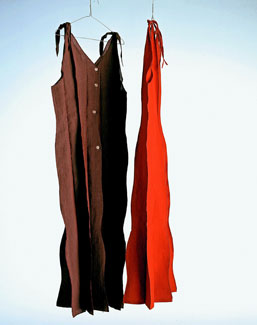
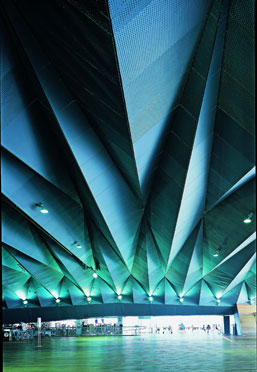
Skin+Bones, which was previously shown at The Museum of Contemporary Art, Los Angeles, leads viewers through the methods used by the two industries, highlighting the similarities in their creative processes, strategies of construction, fulfillment of the human-oriented functions, the use of their practice as a form of expression and the transformation of two dimensional materials into three-dimensional form.
Skin+Bones provides numerous examples of how the two disciplines mirror and sometimes influence each other. The Mikimoto building in Ginza and the Tod’s Omotesando building demonstrate how a stylized structural skin is used to both “clothe” the building in a decorative manner as well as functioning as a structural support.
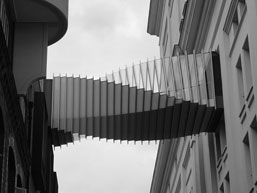
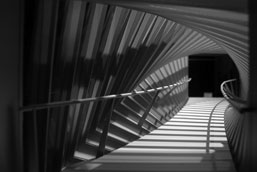
For the Royal Ballet School’s Bridge of Aspiration, Wilkinson Eyre Architects used ‘folding’ as the basis for their design of a concertina-like structure that would connect two buildings on the campus that were not quitein alignment with each other. Printing was used to cover the Veenman Printshop in the Netherlands with text from Dutch poet K. Schippers. Conversely, Yeolee Teng’s Cotton Hoist Dress and Catenary Harness Dress are inspired by suspension bridges: the dresses are suspended in air from the shoulder straps. Isabel Toledo’s Packing and Caterpillar dresses take on a simple geometric form when laid flat, but turns into quite a trendy dress when worn.
Visitors who do not have a background in architecture or fashion may at times not understand the connection between the two disciplines. Signs explaining the intention of the artist or the point of the piece seemed to be placed randomly. Two pieces in particular come to mind; Hussein Chalayan’s Between Collection fashion show and Issey Miyake and Dai Fujiwara’s A-POC (A Piece of Cloth) line. Hussein Chalayan’s finale was of five women standing side by side, wearing burqas that got progressively shorter until the last model was naked with only a face mask. A-POC had several mannequins dressed in clothes attached to a tube of cloth hanging from the ceiling. Without further research, one would not know that Chalayan’s finale was a cultural statement of how the burqa reveals and conceals aspects of a woman’s identity, nor would one realize that A-POC demonstrated a new method of manufacturing whereby an industrial knitting or weaving machine creates continuous tubes of fabric from which wearers can simply cut out any length or design they desire with no sewing required.
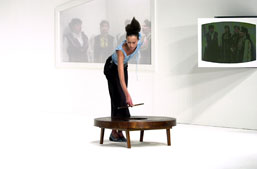
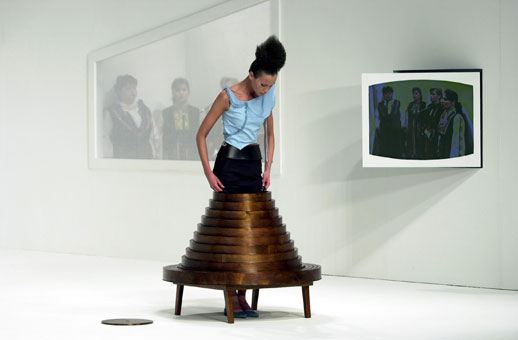
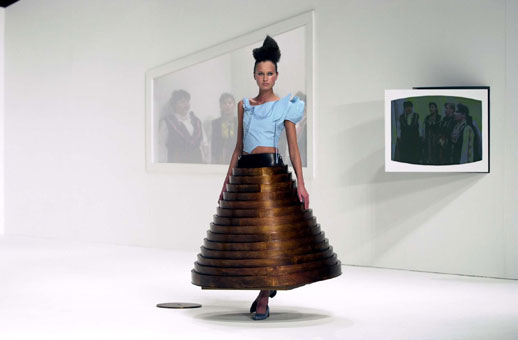
Nevertheless, Skin+Bones can still be enjoyed by the general public because of the logical, considered arrangement of the exhibit. As the walls between fashion and architecture continue to be broken down, we can look forward to seeing how the two disciplines continue to borrow each other’s strategies, technologies and forms while modifying them. Who knows, the world may soon be endowed with the first structurally-sound Tokyo Tower dress.
Melaney Lee
Melaney Lee


